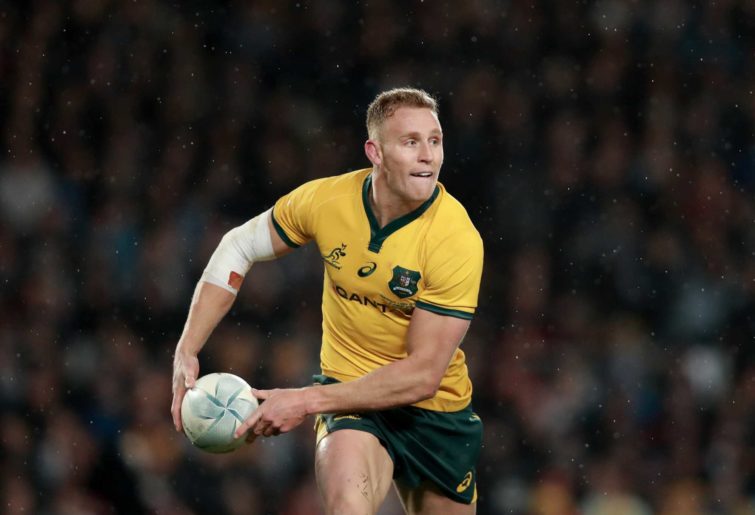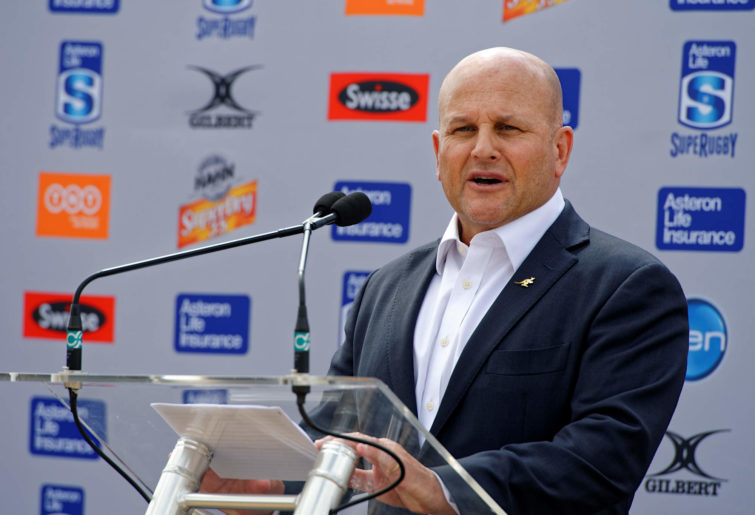In May last year, World Rugby updated their high tackle decision-making framework for match officials and players to operate within.
Initially it slid under the radar, until the World Cup in Japan, where a series of red cards and suspensions raised the hackles of coaches, media and fans across the globe.
The mood was one of frustration, with headline after headline telling the tale:
“Red card mania ruining the World Cup”
“World Cup has turned into a joke”
“Hey World Rugby it’s not me it’s you”
“Games being destroyed”
“Rugby’s suspensions make the game look soft”
As it turned out, the World Cup wasn’t ruined at all, with high tackle incidences dropping away in the second half of the tournament, as players and referees adjusted. It hasn’t been an issue in 2020 either, as coaches and players have accepted the desirability and need to lower tackle heights – all without the game ‘going soft’.
World Rugby’s motivation is clear. Concussion in sport is a serious matter. The NFL is staring down the barrel of claims from affected players that may eventually total US$5 billion. Legal action is currently underway against the NRL by ex-players, and a large class action in the AFL is looming.
As has already been determined by Australia’s High Court, it is World Rugby’s responsibility, as arbiter of rugby’s laws, to ensure the game is safe for players. Add to this the need to grow the game by ensuring parents are happy to allow their children to participate, and ensure that rugby isn’t litigated into insolvency.
There is inherent risk in any collision sport, but what is important in a legal sense is that sporting body administrations act in accordance with the best-known information at the time, and shape their rules and procedures accordingly.
They cannot be reasonably expected to eliminate all instances of head injury, but rugby’s administrative bodies – including SANZAAR and Rugby Australia – must exercise a duty of care over the elements that they can control.
This includes aspects such as management of concussion and return to play protocols for players who suffer injuries – an area where the game has made good progress in recent years.
It also includes mechanisms to prevent players hitting each other in the head with high tackles and shoulder charges.
One of the players in the gun at the World Cup was Australia’s Reece Hodge, suspended for three matches for a high tackle on Fiji’s Peceli Yato. While coach Michael Cheika and Wallabies’ fans were initially frustrated, Hodge’s action fitted World Rugby’s high tackle criteria to a tee.
Yato left the field concussed, and the citing commissioner and judicial panel righted the wrong that was TMO Rowan Kitt failing to deal with the matter during the match.
Once the dust settled, Hodge was left to rationalise how he had been caught up in a transition phase, and consider how his suspension, if it was applied consistently to other players in similar circumstances, was ultimately for the greater good of the sport.

Reece Hodge of the Wallabies. (Photo by Hannah Peters/Getty Images)
How coincidental then, that Hodge happened to be on the Balmain Oval pitch last Saturday night, only a few metres away from where the Waratahs’ Lachie Swinton hit the Rebels’ Isi Naisarani with his shoulder, in an upright, ‘no arms’ tackle.
Referee Graham Cooper penalised Swinton for not wrapping his arms in the tackle, but despite play being held up while an obviously shaken Naisarani was treated on the ground, before being taken from the field, neither Cooper or TMO James Leckie found reason to review the matter any further.
To its credit, World Rugby’s framework, is exceedingly simple and clear. It reads;
Initial decision. Was the tackle a shoulder charge or high tackle?
Was there ball carrier head or neck contact?
Were there mitigating factors, such as
– The tackler makes a definite attempt to change height in an effort to avoid the ball carrier’s head
– The ball-carrier suddenly drops in height
– The tackler is unsighted prior to contact
– It is a “reactionary” tackle, immediate release
– Head contact is indirect (starts somewhere else on the body and then slips up or moves up resulting in minor contact to the ball carrier’s head or neck)
An answer of yes to the first two questions and no to the others, means that the red card threshold has been met. In Swinton’s case, he hit Naisarani in the head with an illegal shoulder charge, with force, with none of the mitigating factors applying.
That the match officials failed to act during play is one thing. Bad enough, but in the heat of a match it can happen, as indeed it did in the Hodge/Yato incident.
No matter, this is where the match review and citing process is supposed to kick in. Apparently.
With no citing of Swinton announced, I inquired of SANZAAR as to the reasons why not, to be told that no comments are made with respect to judicial matters because SANZAAR operates a “fully independent judiciary system.”
I was also reminded that any incidents that have led to a citing by the match citing commissioner are announced on their website, along with details of any suspensions.
Given that there was no reference to Swinton on their website, the only conclusions to draw were that the tackle either wasn’t reviewed, or it was reviewed and the match citing commissioner did not believe it warranted any further action.
Inquiring of Rugby Australia, I was reminded that they were not directly responsible for the process, and directed straight back to SANZAAR, the body responsible for judicial matters.
That’s a futile loop that resembles the judicial inquiry into Melbourne’s hotel quarantine failures. After 13 days of taking evidence, that hearing too, has become a circle of buck-passing, no clearer to uncovering who it was that was actually in charge, and who it was made the decision to engage untrained security personnel.
In all of its existence, SANZAAR has never been an operational body that has acted with autonomy and communicated proactively. Now in the midst of an existential crisis, with its member nations all in various states of COVID confusion, a Lachie Swinton shoulder charge was never going to change this.
However, both Rugby Australia and SANZAAR have an obligation to ensure that not only is the game played safely in Australia, the messaging around the game being safe to play, is strong and consistent.
On the occasions where foul play occurs – particularly when it relates to the sensitive area of concussion – there must be a visible deterrent factor, and players, coaches, fans, parents of prospective players and so on, made to feel confident that the game’s administrative bodies are taking the issue seriously.
The Rebels – not for the first time this season – were offered an apology via the referee review report, which acknowledged that Swinton should have received a yellow card.
On what basis? World Rugby’s framework is clear, there is no yellow card sanction for what Swinton did.
A meaningless sop to the impacted team and hiding behind the cloak of ‘it’s their job’ and ‘it’s an independent process’ doesn’t cut it. Failure to recognise the act for what it was and the subsequent lack of action, transparency and accountability fails Naisarani, and fails Hodge, who must have looked on wondering what the point of his World Cup suspension was.

Lachie Swinton (Photo by Mark Kolbe/Getty Images)
It’s obviously a busy and testing time for rugby’s administrators. But in among all of the challenges they are working through, and despite all of the good work it has done in concussion management, Rugby Australia cannot afford to reinforce a message that it is ok to shoulder charge opponents and hit them in the head, without any sanction.
Surely, Rugby Australia and SANZAAR can do, and must do, better than pretending this incident never happened, or if it did, that it’s somebody else’s problem.
There was always a foreboding sense hanging over Newcastle that the Rebels’ quest to qualify for the Super Rugby finals was going to be drama filled. And so it was, with no fewer than eight tries variously bombed, held up over the line, called short, disallowed for a forward pass or obstruction, or unseen – not to mention a staunch effort by the Force – stymying the Rebels in their quest to win by four points or more.
The final few minutes were high farce, with the Rebels a man up, spurning easy opportunities to score wide out, from where a conversion attempt into a strong wind would likely have seen them come up short. Instead, out of necessity, they elected to bash away close to the posts, mostly for the same non-reward they recently experienced in Brisbane.
The trouble with that approach was that, with so many bodies crammed onto the head of a pin, it was very difficult for the officials to determine grounding, even when the reaction of both sets of players declared that Efi Ma’afu had finally got the job done in the 80th minute.
In the end, it was only a quirk of fate – referee Angus Gardner not blowing his whistle – and the quick thinking of Cabous Eloff to pick the ball up and plant it again, that saved the Rebels.
In all of the chaos, there were no replays from high and above the dead-ball line, from where the try-line would have actually been visible – as there were throughout the New Zealand coverage.
Because both Rugby Australia and Fox Sports have no money, production costs have been pared to an absolute minimum. That may well be a necessity the game has to accept, however in doing so, it makes no sense for referees to rely on helpful camera angles that doesn’t actually exist anymore.

Rob Clarke: CEO of Rugby Australia. (Hugh Peterswald/Pacific Press/LightRocket via Getty Images)
The Force head home to Perth without a win, but with the respect of opponents and fans. At times they were exposed by the step up to Super Rugby level, but more often than not they were highly competitive and very unlucky not to notch a couple of wins. These will almost certainly come next year, with the prospect of a deeper squad and a properly focused lead-in.
The Reds have clearly leveraged a lot of confidence from their heroic defensive effort against the Rebels, accommodating the Brumbies with a swagger and organisation that suggests they are going to be hard to topple over the next two weeks.
Despite the 26-7 loss, there was no lasting damage done to the Brumbies’ cause, although they will need to address issues around their backline alignment, which was set too deep to provide them with any real penetration.
A crowd-free ‘cake-tin’ hosted a highly entertaining North versus South Island match, decided by a pin-point, ‘after the siren’ cross-kick by Josh Ioane, and a perfectly timed leap and catch by the South’s Will Jordan.
This flowed in to the announcement of Ian Foster’s first 35-man All Black squad on Sunday, notable for the elevation of a swathe of emerging talent, and a dearth of options at lock.
The big question for rugby fans everywhere is now, ‘when will we actually get to see them play?’































































































